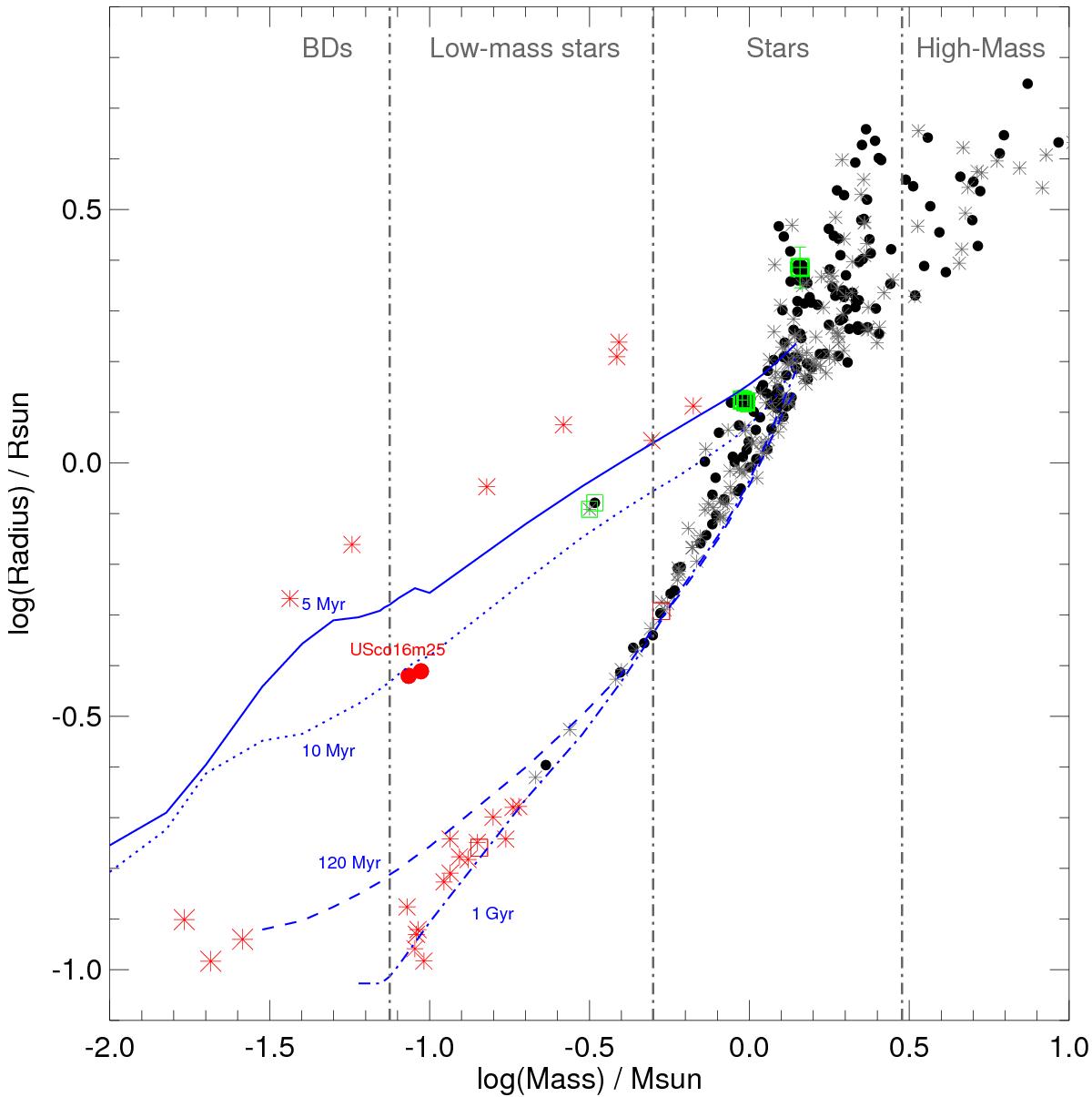Fig. 10

Mass-radius diagram for detached eclipsing binaries: filled dots are primaries and asterisks are secondaries of systems with parameters determined with an accuracy better than 2%. Overplotted as red asterisks are field and young low-mass eclipsing binaries as well as four known eclipsing brown dwarfs: Corot-3 b (22 MJup; Deleuil et al. 2008), KELT-1 b (27.38 MJup; Siverd et al. 2012), and Kepler-39 b (18 MJup; Bouchy et al. 2011). Added in green are the only two eclipsing systems known to date in the USco association. Overplotted in red are the two components of USco16m25: the size of the symbols indicates the size of the error bars. Overplotted in blue are the solar-metallicity evolutionary tracks of the BT-Settl models (Baraffe et al. 2002) for two possible ages of 5 Myr (thick line) and 10 Myr (dashed line) for USco, the age of the Pleiades (120 Myr; long-dashed line), and the age of field dwarfs (1 Gyr; dot-dashed line).
Current usage metrics show cumulative count of Article Views (full-text article views including HTML views, PDF and ePub downloads, according to the available data) and Abstracts Views on Vision4Press platform.
Data correspond to usage on the plateform after 2015. The current usage metrics is available 48-96 hours after online publication and is updated daily on week days.
Initial download of the metrics may take a while.


